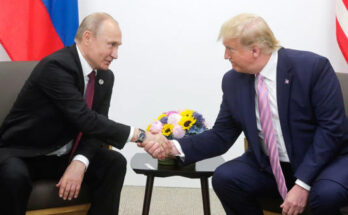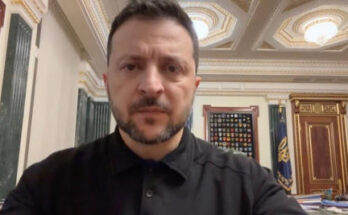The Kremlin continues to promote the fake narrative that EU countries and Ukraine allegedly seek to prolong the war and escalate the situation. Moscow is convinced that this is an attempt to distract Russia from its long-term preparations for war with the West, according to the report from the Institute for the Study of War (ISW).
The spokesperson for the Russian Ministry of Foreign Affairs, Maria Zakharova, responded to the emergency European Union summit held on March 6 in Brussels.
She characterized the EU’s initiatives to increase military spending and financial aid to Ukraine as measures that “deliberately fuel” escalation between the West and Russia and described the EU as a “militarized union” that is “obsessed” with inflicting a strategic defeat on Russia. According to Zakharova, the EU is playing “dangerous geopolitical games” and “delaying” the possibility of negotiations to end the war.
“Zakharova’s comments ignore an ongoing Kremlin effort to rally domestic support for the war in Ukraine and justify Russia’s long-term efforts to militarize Russian society by claiming that Russia is fighting a proxy war with the West in Ukraine and must prepare for a future war with the West,” states the report.
Belarus as partner in future campaign
The Institute for the Study of War (ISW) also believes that Russia’s efforts to strengthen its military presence in Belarus, expand its military capabilities, and militarize society are part of a long-term strategy to prepare for a potential future war with the North Atlantic Treaty Organization (NATO).
In late August 2021, Russia deployed several S-300 air defense systems in Belarus, and in September 2021, Russian Aerospace Forces units began increasing their military presence in Belarus, a trend that has continued over the past three years. Additionally, ISW highlights that Russia and Belarus have consistently used the Union State Treaty to deepen their bilateral military agreements.
In November 2024, Russia updated its nuclear doctrine, extending the nuclear umbrella to Belarus. The Kremlin explicitly stated that in the event of aggression against Belarus, it could use the tactical nuclear weapons located on the territory of that country.
Signs of Russia’s preparation for war with West
The Institute for the Study of War also noted that Russia is undergoing significant restructuring of its Armed Forces, developing its military industry, and engaging in hybrid warfare. This highlights Moscow’s efforts to prepare for, and possibly initiate, a future conflict with the West.
In March 2023, former Russian Defense Minister Sergei Shoigu announced that the Armed Forces would form 14 new military divisions, clearly demonstrating an intention to expand its army in the coming years. Russia is trying to increase its long-term military potential by expanding and nationalizing its defense-industrial base.
At the same time, various European law enforcement agencies and authorities have stated that Russia has been conducting hybrid warfare across Europe for much of the past decade. This is evidenced by the fact that in April 2024, Russia forced several commercial aircraft to return after targeting them with GPS jamming devices.
“The Kremlin is likely advancing this narrative as part of its efforts to exacerbate tensions between the United States and Europe and undermine the wider Western alliance supporting Ukraine,” emphasizes ISW.
Risk of large-scale war in Europe and US role
The head of the German intelligence service, Bruno Kahl, did not rule out the possibility that after the war in Ukraine ends, Russia might attack European countries. The Kremlin could try to test Article 5 of the NATO Charter on collective security.
The administration of US President Donald Trump has been facilitating the strengthening of Russia’s positions on the international stage and in its war against Ukraine. Specifically, the US recently suspended military support to Ukraine, as well as intelligence-sharing with Ukrainian intelligence services.
This led to an intensification of Russian efforts to push Ukrainian forces out of the Kursk region and shell frontline settlements in Ukraine.
Additionally, Trump stated his intention to withdraw 35,000 American troops from Germany and deploy them in Hungary under the leadership of the pro-Russian Prime Minister Viktor Orbán.



